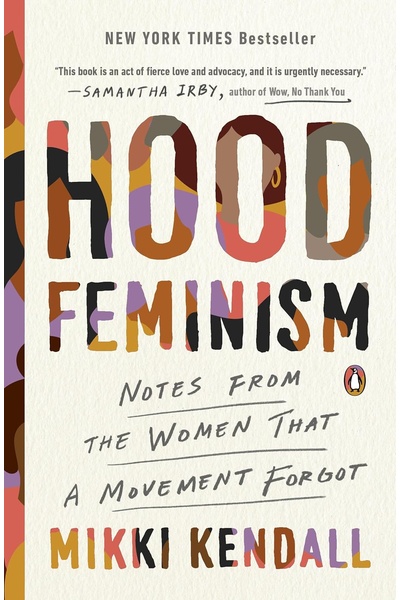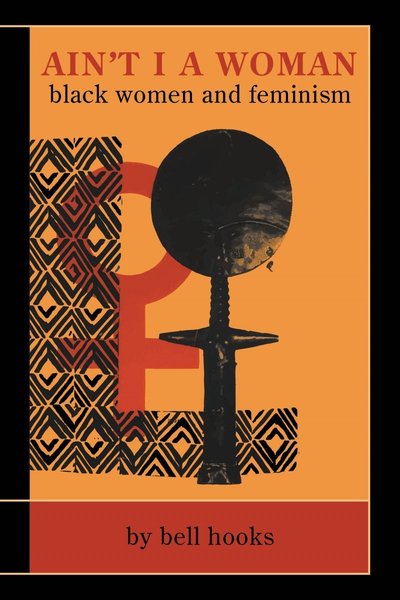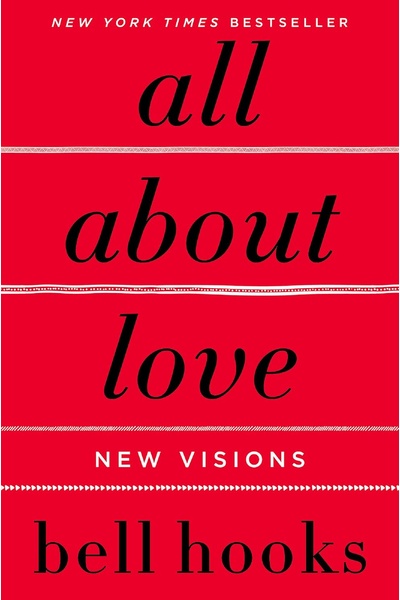Hood Feminism
A powerful critique of mainstream feminism's failure to address the basic needs of marginalized women, advocating for housing, food, education, and other survival issues to be at the core of feminist agenda.

📝 Book Review
“Hood Feminism” is a powerfully critical and deeply insightful work published by Mikki Kendall in 2020, offering a forceful and sharp critique of mainstream feminism by directly pointing out its fundamental failure to address the actual needs of poor women of color. As a Black woman writer and activist from Chicago’s South Side, Kendall uses her rich community experience and keen theoretical perspective to reveal the deep-seated class and racial biases within contemporary feminist movements, while providing important insights for constructing more inclusive and effective feminist practice.
One of Kendall’s sharpest critiques in this work is her profound reflection on mainstream feminism’s long-standing neglect of basic survival needs. She pointedly argues that while mainstream feminism enthusiastically discusses glass ceilings, corporate board gender ratios, and workplace sexual harassment, it remains blind to the life-and-death basic problems facing women in impoverished communities. Food security presents a severe daily challenge for many marginalized women—they don’t know where their next meal will come from, let alone provide nutritionally balanced food for their families.
Basic Survival Needs vs. Corporate Advancement
Housing rights are equally crucial issues ignored by mainstream feminism, with countless women facing the threat of homelessness or being forced to live in dangerous and unhealthy residential environments. Healthcare accessibility and quality disparities directly relate to women’s lives and health, yet these issues rarely appear on mainstream feminist agendas. Unequal distribution of basic educational resources affects generation after generation of girls in marginalized communities, while community safety issues directly threaten women’s personal safety and basic dignity.
Kendall further emphasizes that economic justice should be a core feminist issue, not a marginal topic. She provides in-depth analysis of the significance of minimum wage struggles for women, particularly women of color, pointing out that many women work in low-wage jobs and need not opportunities to break glass ceilings but wage levels that can sustain basic living. Labor rights protection is a survival necessity for these women, who often bear the heaviest burdens in the most precarious work environments.
Improvement of social welfare systems directly relates to the survival of single mothers and impoverished families, yet these issues are often marginalized by mainstream feminism. The debt crisis represents a heavy burden for many women’s families, limiting their freedom of choice and development opportunities. The growing wealth inequality widens the gap between women of different classes, yet mainstream feminism rarely fundamentally questions the structural roots of this inequality.
Intersectional Analysis in Practice
Kendall’s critique of mainstream feminism is systematic and profound—she not only identifies where problems exist but more importantly analyzes the deep-seated causes behind these problems. Her critique strikes at the core blind spots of mainstream feminism, revealing how a movement claiming to fight for all women’s rights actually serves only the interests of privileged groups.
In her in-depth analysis of white middle-class bias, Kendall sharply reveals mainstream feminism’s class and racial blind spots. She presents a thought-provoking contrast: professional ceilings versus survival floors. Mainstream feminism enthusiastically discusses how to break career development ceilings, but for many marginalized women, their problem isn’t how to climb up but how not to fall below the survival baseline. When privileged women fight for more corporate leadership positions, impoverished women struggle for basic job opportunities.
Kendall provides in-depth analysis of the fundamental difference between individual empowerment and collective liberation, pointing out that mainstream feminism often emphasizes individual success and choice while ignoring that systematic oppression requires collective action to solve. She critiques mainstream feminism’s tendency to overemphasize representation while neglecting material improvement, noting that seeing more women’s faces in media or politics cannot improve the actual living conditions of poor women.
The Myth of Solidarity
Kendall’s critique of selective solidarity cuts to the heart of the matter, exposing the hypocrisy of conditional and selective solidarity within feminist movements. She provides in-depth analysis of how mainstream feminism systematically ignores Black women’s issues—even when claiming to support “all women,” Black women’s particular experiences and needs are often marginalized or completely ignored.
She sharply critiques feminist movement exclusion of transgender women, pointing out that this exclusion exposes the movement’s internal biological essentialism and exclusivity. Her in-depth analysis reveals mainstream feminism’s disregard for working-class women, whose labor rights and economic needs rarely occupy central positions in feminist agendas. She also points out immigrant women’s marginalized status in feminist movements—their unique challenges are often ignored, and their voices are rarely heard.
This selective solidarity actually betrays feminism’s basic principles—it maintains existing hierarchical orders rather than challenging all forms of oppression.
Community-Led Solutions
In Kendall’s work, she doesn’t merely stop at critique but actively demonstrates how marginalized communities create their own solutions. Her analysis shows that truly effective change often comes from autonomous organization and collective action by oppressed groups themselves.
Kendall particularly emphasizes the importance of community-led solutions, deeply exploring how grassroots organizations create effective self-rescue mechanisms without external support. Mutual aid networks are central to her analysis—these networks are not charitable in nature but based on interdependence and the need for collective survival. In marginalized communities, women establish complex mutual aid systems where they share resources, exchange services, and support each other. These networks are often more effective and timely than official social services.
Community defense represents another important organizational form. When police cannot or will not protect communities, residents organize themselves to protect each other’s safety. Collective childcare practices embody community solidarity responsibility—children are not just parents’ responsibility but the entire community’s future. Food sovereignty movements allow communities to control their own food production and distribution. Urban farming and community gardens not only provide healthy food but more importantly cultivate community autonomous capacity.
Cultural Work as Resistance
Kendall profoundly recognizes the important role of cultural work in resistance, emphasizing that culture is not merely entertainment or decoration but an important resource for survival and resistance. Black women’s cultural traditions contain rich wisdom and strength—from spirituals to hip-hop, from family gatherings to community celebrations, these cultural forms carry historical memory, values, and spirit of resistance.
The power of community narratives lies in their ability to counter mainstream media bias and distortion, allowing community members to control their own story-telling. Preservation and transmission of collective memory is crucial for maintaining community identity and continuity—it records not only pain and trauma but also resilience and victory. Cultural preservation work ensures that traditional knowledge and practices won’t be lost in modernization processes, as this knowledge often contains wisdom for dealing with difficulties and creating solutions.
Educational Justice
In her analysis of educational justice, Kendall deeply explores how educational systems systematically fail Black girls and how this failure constitutes part of broader social injustice. The school-to-prison pipeline concept reveals the deadly connection between educational systems and criminal justice systems, with many Black girls being pushed out of school systems and directly entering the prison industrial complex.
Over-punishment is a key mechanism in this process—Black girls receive harsher punishment than white girls for the same behaviors, being more likely to be suspended, expelled, or transferred to alternative schools. Push-out rates reflect educational systems’ abandonment of certain students, an abandonment often based on racial and class bias. Resource insufficiency is a fundamental problem facing many marginalized community schools—lack of funding, outdated facilities, high teacher turnover rates all affect educational quality.
The harm of stereotypes is deeper and more lasting—when Black girls are perceived as “angry,” “difficult to manage,” or “not intelligent,” these biases affect the educational opportunities and support they receive.
Reproductive Justice Framework
Kendall’s analysis of health and reproductive issues is particularly profound. She moves beyond mainstream feminism’s narrow focus on “choice rights” to propose a more comprehensive reproductive justice framework. She deeply understands that for many marginalized women, the real problem isn’t just whether they have the right to choose, but whether they have the conditions and resources to exercise these choices.
In reproductive justice analysis, Kendall presents a comprehensive framework that is far more complex and realistic than simple “choice rights” discussions. The right to reproduce means not only legal permission but having sufficient economic resources, medical support, and social conditions to safely bear and raise children. For many poor women, even if they want children, real conditions might make reproduction a luxury.
The right not to reproduce is equally important, but this isn’t just the right to access contraception and abortion services—it’s the right not to be forced to reproduce or be sterilized. Historically, women of color frequently became victims of forced sterilization, their reproductive autonomy stripped away by states and medical institutions. The right to raise children safely is central to the reproductive justice framework, recognizing that reproduction isn’t an isolated event but a process requiring long-term community support.
Health Disparities and Medical Racism
Kendall’s analysis of health disparities reveals the severity and complexity of racialized health inequalities. Racial differences in maternal mortality rates provide a particularly shocking example—Black women’s maternal mortality rates are three to four times higher than white women’s. This difference persists even after controlling for education and income levels, indicating deep-seated racial bias within medical systems.
Mental health issues in marginalized communities are often ignored or stigmatized, with Black women’s mental health needs frequently failing to receive appropriate recognition and treatment. The phenomenon of pain not being believed represents typical medical racism—medical professionals often assume Black women have higher pain tolerance or question the authenticity of their pain, preventing them from receiving appropriate pain management and treatment.
Medical discrimination takes many forms, from obvious hostility to subtle neglect. This discrimination not only affects treatment quality but also impacts patients’ trust in and use of medical systems.
Vision for Transformative Feminism
Based on profound analysis of existing feminist movement problems, Kendall offers concrete and practical suggestions for moving forward. She advocates not for minor adjustments to existing movements but for fundamental rethinking of feminist practice.
Centering marginalized voices means placing the needs and experiences of the most marginalized groups at the movement’s core rather than treating them as additional considerations. This requires feminist movements to reexamine their priorities, ensuring those facing the most multiple oppressions receive the most attention and resources.
Prioritizing material improvement means focusing on concrete, measurable improvements in living conditions rather than being satisfied with symbolic progress or discourse-level changes. This includes meeting basic life needs like housing, food, healthcare, education, and employment.
True intersectionality requires movements to not only theoretically acknowledge different identity intersections but practically create spaces and strategies that can accommodate multiple identities and needs. Accountability requires feminist organizations and leaders to be responsible to marginalized communities, accepting grassroots supervision and criticism, ensuring movements truly serve the groups they claim to represent.
Resource redistribution requires feminist movements not only to fight for new resources but to redistribute existing resources, ensuring marginalized groups receive fair shares.
Contemporary Relevance and Ongoing Impact
“Hood Feminism” is not merely a necessary correction to privileged feminism but a blueprint for building movements that truly serve all women. Through this work, Kendall shows us that feminism’s future lies not in exclusion and hierarchy but in inclusion and solidarity. She reminds us that true feminism must start from the most marginalized women’s experiences, must focus on the most basic survival needs, and must challenge all forms of oppression and injustice.
The book’s insights remain highly relevant in contemporary discussions about feminist priorities, racial justice, and economic inequality. Kendall’s call for material feminism—feminism that addresses concrete survival needs—resonates with current movements for housing justice, healthcare access, and economic equality.
Conclusion: Building Inclusive Feminist Futures
Only through such approaches can feminism become a truly liberating force, creating a more just and equal world for all women. Kendall’s voice is not only critical but constructive—she points us toward a path leading to more inclusive and effective feminist movements. Her work demonstrates that authentic feminist politics must address the full spectrum of women’s experiences, from the boardroom to the neighborhood, from policy halls to kitchen tables.
“Hood Feminism” challenges us to expand our understanding of what feminist work looks like and who gets to define feminist priorities. It insists that movements claiming to represent all women must actually center those women who face the most barriers to survival and thriving. Through her powerful analysis and clear vision, Kendall provides both a necessary critique and a hopeful path forward, showing that feminism’s greatest strength lies not in its ability to elevate a few but in its potential to transform conditions for all.
The book’s enduring contribution is its demonstration that effective social movements must be accountable to those most impacted by systemic oppression, and that true liberation requires addressing the intersections of race, class, gender, and other identities in both theory and practice. Kendall’s hood feminism offers a model for building movements that are both radically inclusive and concretely effective in improving the material conditions of the most marginalized women’s lives.
Discussion
读书讨论
分享您对这本书的感想和看法,与其他读者交流见解
加入讨论
分享您对这本书的感想和看法,与其他读者交流见解
加载评论中...
Book Info
Related Topics
🛒 Get This Book
 Buy on Amazon
Buy on Amazon Related Books
读书讨论
分享您对这本书的感想和看法,与其他读者交流见解
加入讨论
分享您对这本书的感想和看法,与其他读者交流见解
加载评论中...

